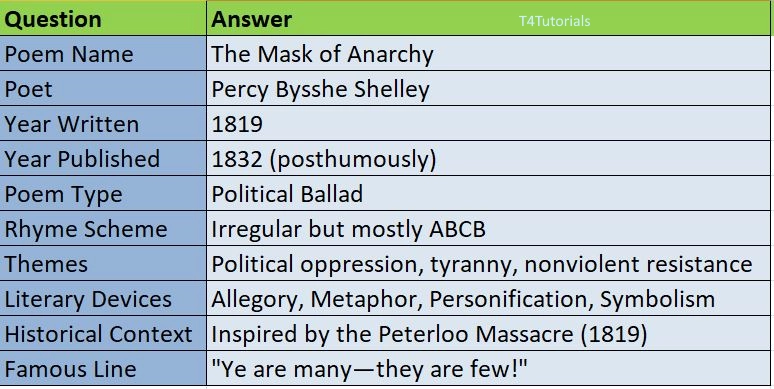Summary:
The Mask of Anarchy is a powerful political poem written by Percy Bysshe Shelley in response to the Peterloo Massacre of 1819, in which peaceful protesters in Manchester were attacked by British forces. The poem presents a grim vision of England, where corrupt figures such as Murder, Fraud, and Hypocrisy rule the land, led by Anarchy, symbolizing the tyrannical government. Despite the bleak imagery, the poem offers a hopeful message. It calls for the oppressed to stand up against tyranny, not through violence but through peaceful resistance. The poem’s famous lines—”Ye are many—they are few!”—became a rallying cry for future social and political movements. Shelley introduces the personification of Hope, who inspires people to fight for justice, and ultimately, Freedom emerges as the guiding force for the oppressed. The poem advocates for political change through unity, moral strength, and passive resistance rather than bloodshed. Because of its radical message, the poem was not published until 1832, after Shelley’s death.
10
Score: 0
Attempted: 0/10
Subscribe
| Question | Answer |
| Poem Name | The Mask of Anarchy |
| Poet | Percy Bysshe Shelley |
| Year Written | 1819 |
| Year Published | 1832 (posthumously) |
| Poem Type | Political Ballad |
| Rhyme Scheme | Irregular but mostly ABCB |
| Themes | Political oppression, tyranny, nonviolent resistance |
| Literary Devices | Allegory, Metaphor, Personification, Symbolism |
| Historical Context | Inspired by the Peterloo Massacre (1819) |
| Famous Line | “Ye are many—they are few!” |